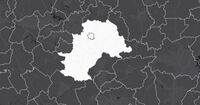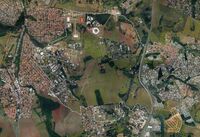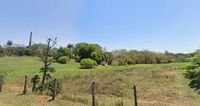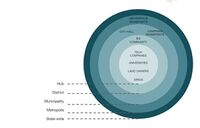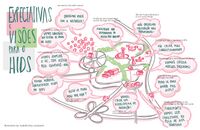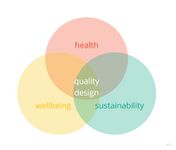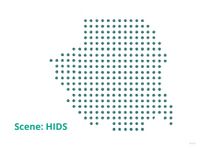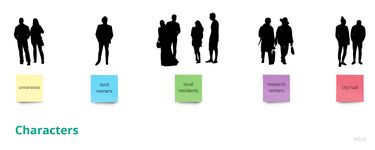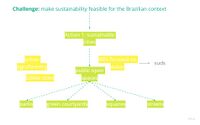LED2LEAP 2021 - Brazil Team
>>>back to working groups overview
For help with editing this Wiki page use this link.
For assignments and key readings use this link.
| Area | HIDS | |
| Place | Barão Geraldo - Campinas | |
| Country | Brazil | |
| Topics | Landscape Democracy | |
| Author(s) | Haroldo Dias and Tiffany Liu | |
Landscape Democracy Rationale
Built upon the right of landscape, the notion of 'Landscape Democracy' has the goal to be inclusive by exploring its relationship with spatial justice.
It brings up discussions concerning democratic participation in landscape assessment, how urban spaces can become more inclusive towards a community?
Location and Scope
Phase A: Mapping Your Community
Welcome to your community and its landscape
- Located in the district of Barão Geraldo within the Campinas municipality, state of São Paulo, Brazil
- Transitional location of the urban perimeter and rural areas
- Large concentration of universities with a national scope
- Latin America's first synchrotron light source in the area
- Part of Campinas' rural heritage (coffee farms)
Groups of Actors and Stakeholders in Your Community
- Key Actors: Local Residents, Universities, District Administration, Municipality, Landowners, Metropolitan Administration;
- Primary Actors: Schools, Students, Community Leaders, Farmers;
- Secondary Actors: Small businesses, Potential Tourists.
Currently the most visible actors are the university and the municipality in the planning process. There has been some discussions and activities with some key and primary actors, but due to the pandemic, it wasn't possible to actively engage the local citizens, former recorded city meetings and research papers were used in order to make assumptions about local perspectives.
Relationships Between Your Actors and Groups
- Based on previous discussions, stronger and organized groups have had bigger influence in the project compared to smaller, local groups.
- Groups have very different mindsets of how they envision the future of the area
- Real state speculation has been pressuring new developments, largely consisted of gated communities with no ties with their surroundings
Summary of Your Learnings from the Transnational Discussion Panel
- It was interesting to observe cultural uses of urban settings, meaning how different smaller communities have distinct ideations and uses of public spaces, which can sometimes lead to conflicts between groups. However, these spaces also have the potential of becoming places of connection and urban vitality - specially if there is community engagement in the planning process, as shown by the Zagreb team.
Theory Reflection
- Commission for Architecture and the Built Environment (CABE) Space, UK (2010). Community green: using local spaces to tackle inequality and improve health
"‘ The principles of environmental justice are pretty simple. Living in a clean and healthy environment is everyone’s right. The most vulnerable people with the least power and money see these rights denied on a daily basis. For example, air pollution, the siting of hazardous installations, flooding, inadequate enforcement of environmental laws, bad urban planning; or simply not having any access to the natural environment’ Capacity Global" (p.6)
"Research by Ravenscroft and Markwell found public parks in Reading were more accessible to black and minority ethnic young people than other types of leisure facility but that accessibility is highly localised and unevenly distributed. Neighbourhood parks were perceived as being most important by study participants, but were also perceived to be more racially segregated."
"Methods of community engagement used by the projects included:
- events and activities such as urban farming and competitions to draw in the local community
- creative play and audio-visual methods to engage both the young and older people
- revealing a ‘hidden story’ behind the landscape that resonates culturally or historically
- community onsultation through events onsite, design workshops, discussion groups, or visits to quality green spaces.
Urban farming and food was a key method of engagement within the projects that were reviewed." (p.16)
References
- Commission for Architecture and the Built Environment (CABE) Space, UK (2010). Community green: using local spaces to tackle inequality and improve health
Phase B: Democratic Landscape Analysis and Assessment
Tiffany Liu, Abhishek Vekariya and Ahmed Essounni Correspondence
- ''Discussion was centered in the topics of community engagement, the role of the planner as a intermediate, and apropriation of spaces within the contemporary city''
Your Name and Partner's Name Correspondence
- ''insert text here''
Phase C: Collaborative Visioning and Goal Setting
The Scene
The scene would be represented by the immediate perimetre of the proposed design area. A place meant to be inhabited by different uses and to act as a bonding place for all people.
The Actors
Considering the influence of the area within a metropolitan reach, the actors considered were: the universities in the area, the landowners, the local residents from Barão Geraldo District, research centers and the city hall.
The Story
Considering all of the complexities of the area, as well as its own name suggests, the International Hub for Sustainable Development has as its main objective to make sustainability feasible within the Brazilian urban context, where all SDGs are considered and applied to the design process in order to create human living spaces.
Reflect on Your Story of Visioning
- insert text here
Phase D: Collaborative Design, Transformation and Planning
Prototyping Action
Explore online platforms as form of engagement with the community and stakeholders, through a main webpage, as well as Youtube and Instagram accounts. In order to enable the visibility of the urban design proposal to the public, a digital model will be created using ArcGIS softwares, such as ArcGIS Urban to establish construction parametres, and later on, building design explorations with CityEngine.
With the 3D virtual model completed, it will then be available to be viewed as a VR piece by individuals through making DIY VR glasses.
The Evolution of Your Prototyping Action
- insert text here
The Plan Behind Your Prototyping Action
- insert text here
The Realization of Your Prototyping Action
- insert text here
Reflect on Your Prototyping Action
- insert text here
Phase E: Collaborative Evaluation and Future Agendas
Collaborative Evaluation and Landscape Democracy Reflection
- insert text here
The Actors in your Collaborative Evaluation
- insert text here
Reflection on the Online Seminar
- insert text here
Reflection on the Living Lab Process
- insert text here
Your Living Lab Code of Conduct
- insert text here
Process Reflection
- insert text here

